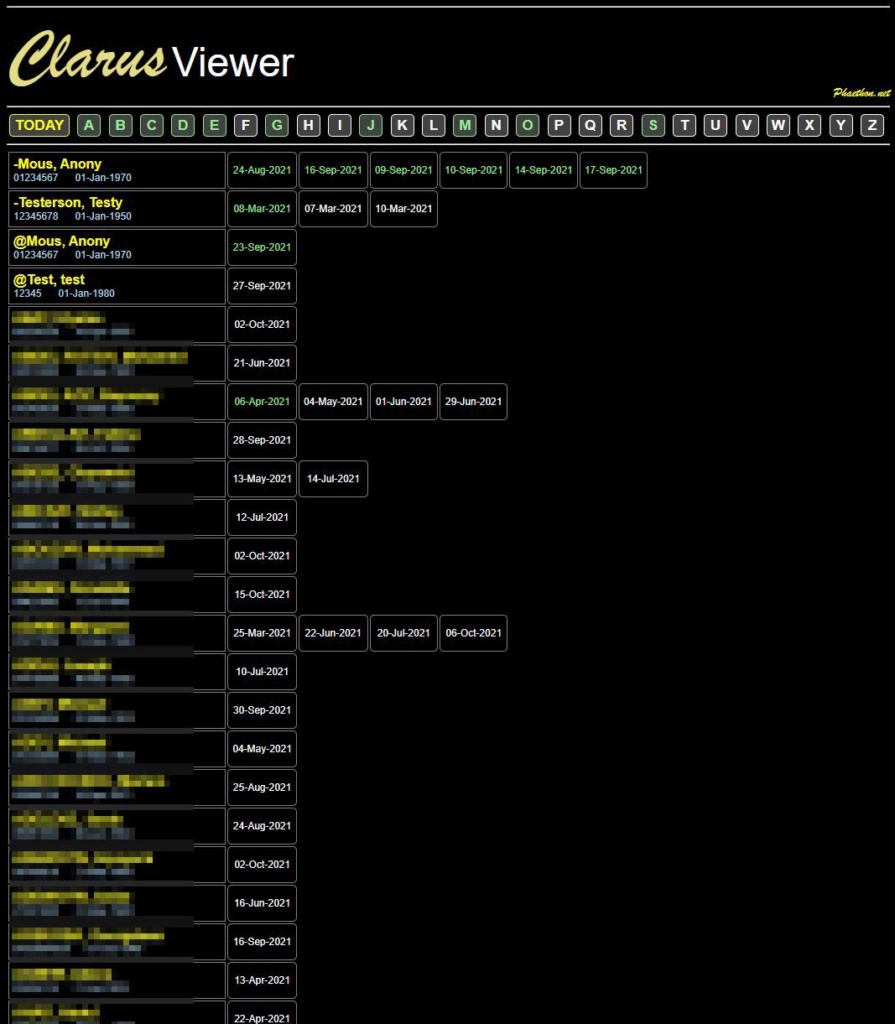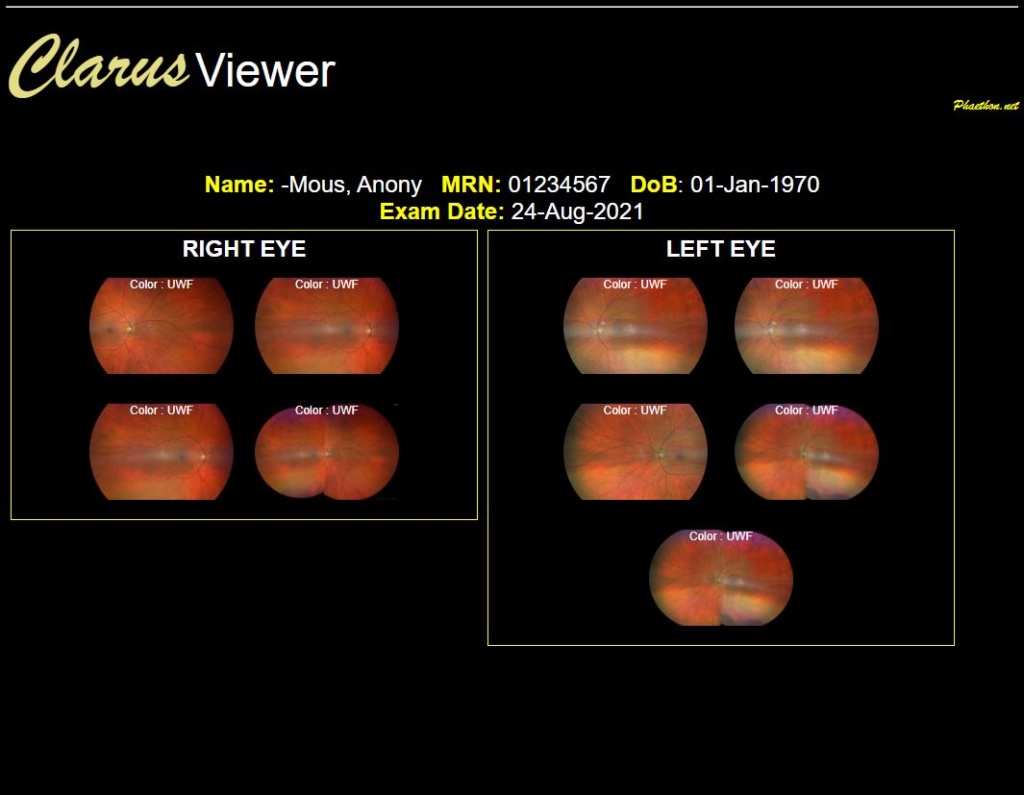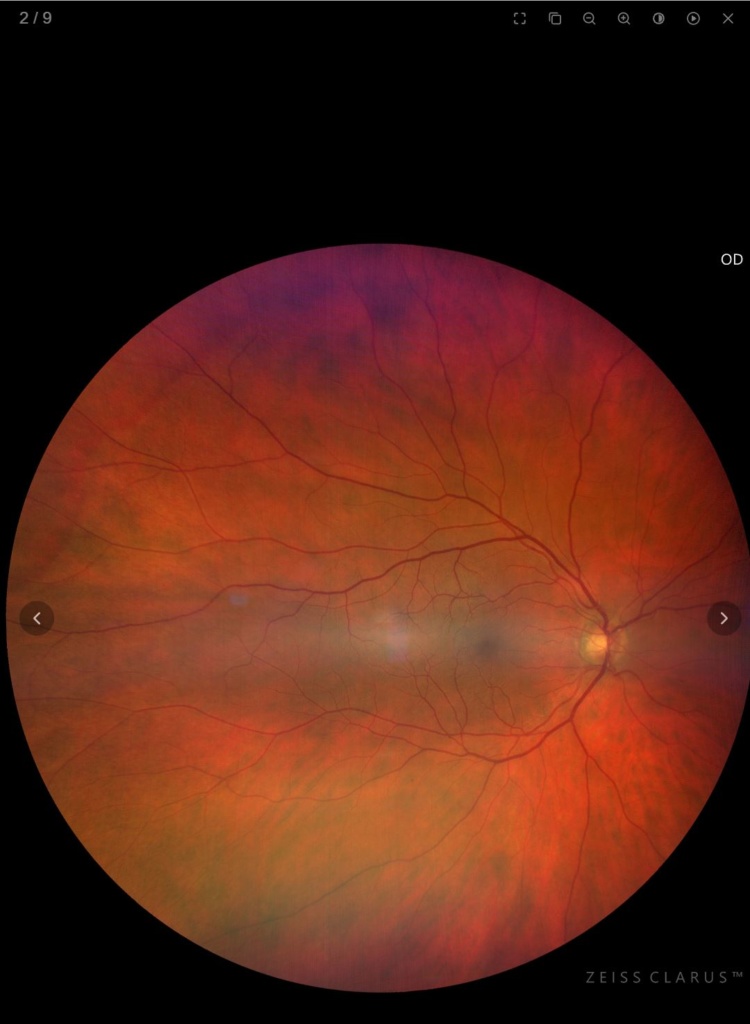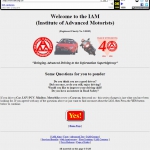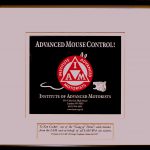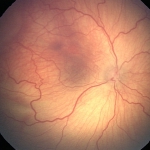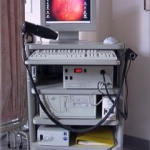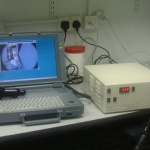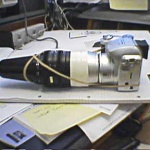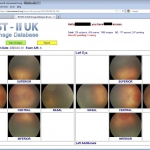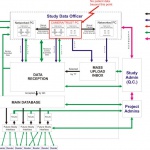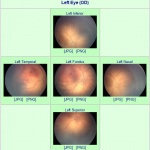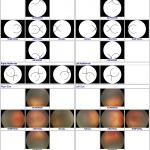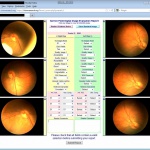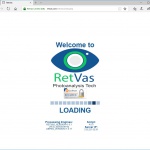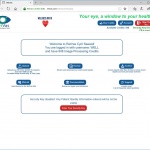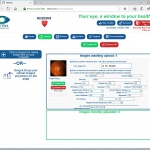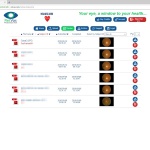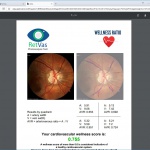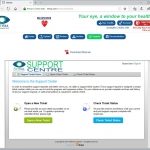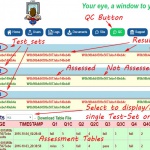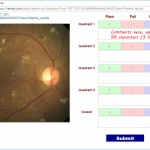Many of the past and present projects and demonstrations of systems I have created can be found at VisionResearch.org
My philosophy is not to provide people with solutions to problems they don’t know they have, but to provide solutions to needs they did not realize could be met.
Institute of Advanced Motorists Local & National Web Launches
Around 1990 I set up a website for Birmingham Advanced Motorists – a charitable trust that helps motorists prepare to take the Institute of Advanced Motorists’ (IAM) advanced driving test.
This led me to be invited, in 1995, to join a team – named the Gang of Three – to bring the national IAM to the Web. In 1995 The Gang of Three was given a award at the IAM national conference in Birmingham recognising their contribution. The website in it’s original basic form persisted until at least 2003, long after I had left the charity.
RetCam & Retinopathy of Prematurity
Between 1995 and 2005 I helped run the Retinopathy of Prematurity ward rounds at Imperial College’s St Mary’s Hospital Neonatal Intensive Care Unit. This involved the initial organization of visits to patients, operating the camera while Professor Fielder and other clinicians acquired pictures and maintaining upgrading and improving the equipment and methodologies used.
The huge numbers of images acquired during these clinics led me to realise a better way of accessing the data was needed and I developed a sever-based image database to host data from two generations of RetCam.
The databases for London RetCam I and RetCam II are still active at VisionResearch.org (authorized access only!) and contain 37951 images from 1603 examinations of 566 infants.
Telemedicine
Telemedicine is the acquisition of medical data from a remote patient, it’s transmission to qualified personnel and the return of diagnostic conclusions for local action.
My experience in acquiring retinal images, storing them on a server and distributing them for remote assessment, led me to be invited to collaborate in the int BOOST/RIDA international study. I was responsible for writing software to anonymize data collected from RetCams in NHS neonatal units around the UK, storing the sanitized data – with the NHS Trust’s permission – on my personal server and writing web interfaces for researchers around the world to access the data and conduct studies.
My scripts gathered their responses, collated the data and presented them for analysis that formed the basis of several papers and meeting abstracts.
CVRSoc.org
Since 2004 I have provided web-hosting and design services for the Child Vision Research Society (CVRS, CVRSoc) – an international collaborative society of researchers in visual development and vision disorders in infants and children. The CVRS organizes biennial meetings at different venues around the world I also provide other internet services such as administering the group’s mailing list and have handled the online registration and abstract submissions for several meetings.
RetVas.com
At Imperial College London, our research group began to develop methodologies and a program to quantify parameters of vessel morphology in eyes affected to varying degrees by ROP.
A casual remark by me that I could take that program and run it on a web server was later developed by Clare Wilson into a commercial venture called RetVas.
RetVas aimed to take retinal images uploaded from clinical sources and provide assessments of the vessel morphology to quantify cardiovascular health, diabetic retinopathy and ROP.
I joined the team to realize the web-based aspects of the project:-
• Establishing secure stand-alone and later cloud servers to host operations.
• A public website presenting the commercial aspect of the project.
• Secure upload and storage of images, including a zero-knowledge encryption of patient identity to which only the client has access.
• Preparing and passing images to the central analysis program.
• Capture, format and present the results in a report downloadable by the originating client.
• Ensuring the system secures data, keeps backups and monitors quality and integrity of original submissions and results.
Initially RetVas.com began life on my personal server at VisionResearch.org while the proof of concept – that the software could run on a server, taking in images and delivering results reliably securely – before moving to a dedicated bare metal server under a startup program.
Funding became difficult after the Brexit vote and I moved the project to Amazon Web Services to take advantage of a free year of hosting after which RetVas.com returned to my personal server while further funding is sought.
Current Work Projects
Humphrey Visual Field (HVF) Server
On arrival at my current department the pair of Humphrey Field Analysers (HFAs) were not networked and results had to be printed on thermal paper, delivered to the doctor’s desk by hand and later scanned by hand into the patient’s electronic patient record.
I soon got the newer machine networked (the older machine simply has no network hardware in it) and setup a data repository on a nearby desktop PC. Adding a webserver (IIS) to this machine I wrote scripts (PHP) to allow the doctors instant access to the reports as they are generated on the new HFA. The older, less-used, machine’s reports are still delivered by hand to the doctor but are transferred at the end of the day to the newer HFA and then into the server repository.
UPDATE: Two new Zeiss HFA3s have now replaced the older devices. Both these machines now feed into my system and continuous field results can be viewed from 2003. Results are immediately available for clinicians on their desktops.
A script runs nightly to prepare the days reports for automated transfer to the hospital’s medical record. To date it has not been possible to interest the hospital’s medical record service to take the data electronically from my server and they continue to require hard-copy to be prepared manually, forwarded to them and scanned into the record system.
A demonstration version of the HVF Server can be viewed at VisionResearch.org. The demonstration is approximately 10% of the size of the currently operating clinical deployment and is populated with randomly generated identities (names, hospital numbers and dates of birth) and uses duplicated non-clinically generated reports.
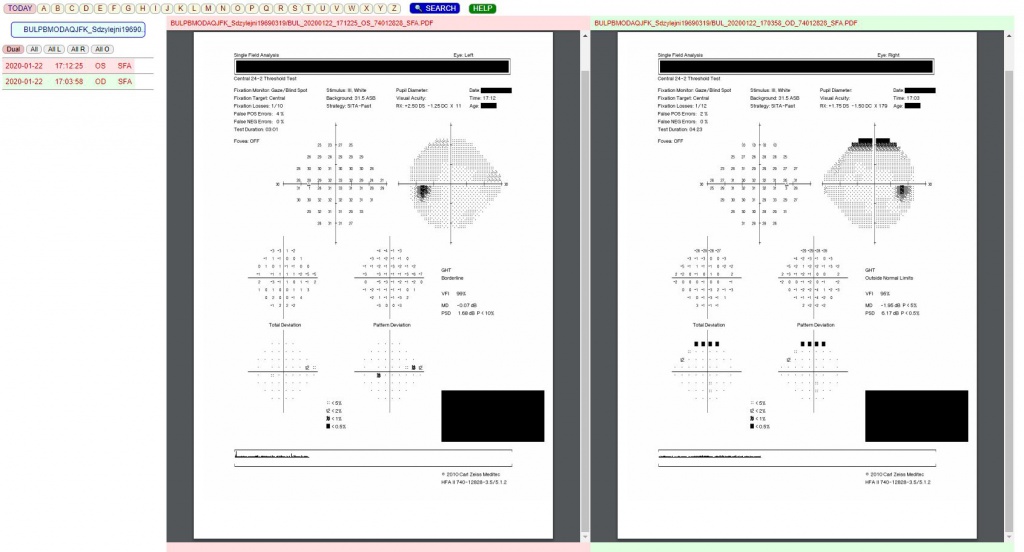
The server also has a variety of scripts, written by me in PHP, to interrogate both the fields data repository and the MSSQL database of the department’s Optical Coherence Tomography (OCT scanners) to extract useful statistics on usage and data quality.

Humphrey Visual Fields tests and fixation loss rates (a measure of unreliability) from 2006 to present. This graph is generated with Google Visualization API using data calculated by PHP scripts that run after clinic every night.
The columns represent the monthly total number of visual field tests conducted and the red line the average fixation-loss rate for that month. The green column represent the date on which I started in the department: Note the significant drop in unreliability since then.
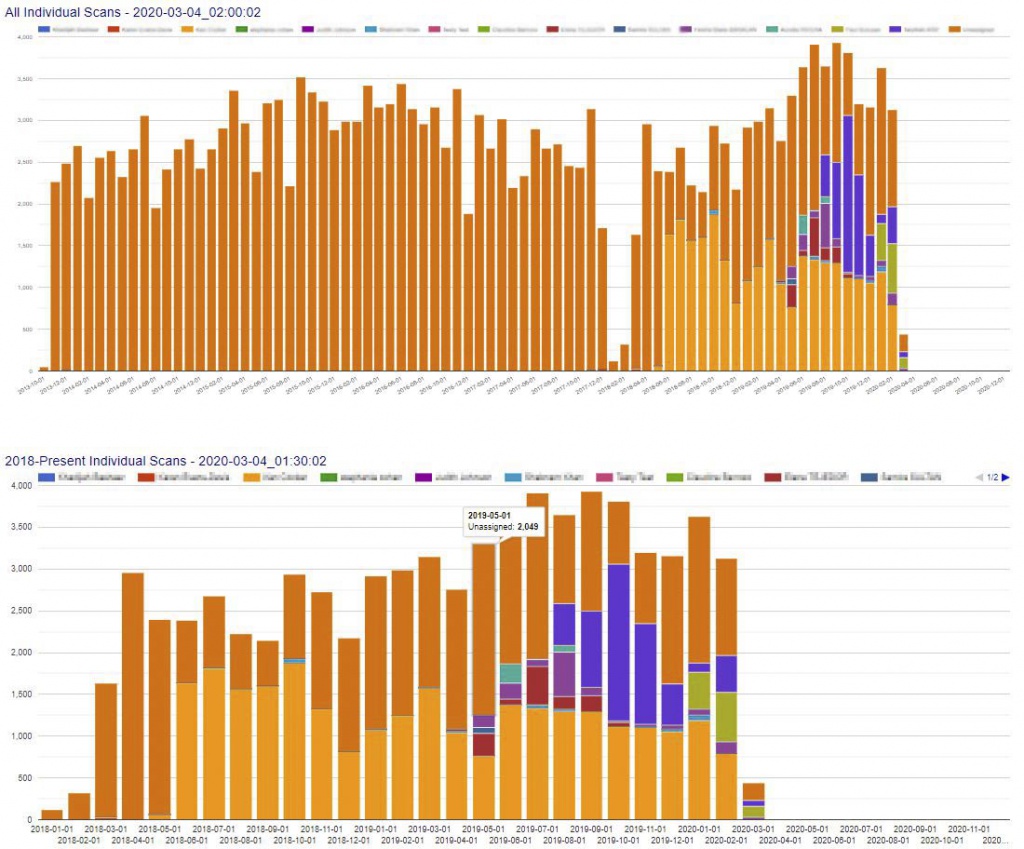
Individual OCT scans of patients each month since 2013 (upper) and since 2018 (lower). The large dip at the start of 2018 marks a period prior to my arrival when the OCTs were malfunctioning and badly in need of upgrade. Once I got the OCT computers upgraded I started a policy of encouraging operators to enter their ID at each exam (different colours).
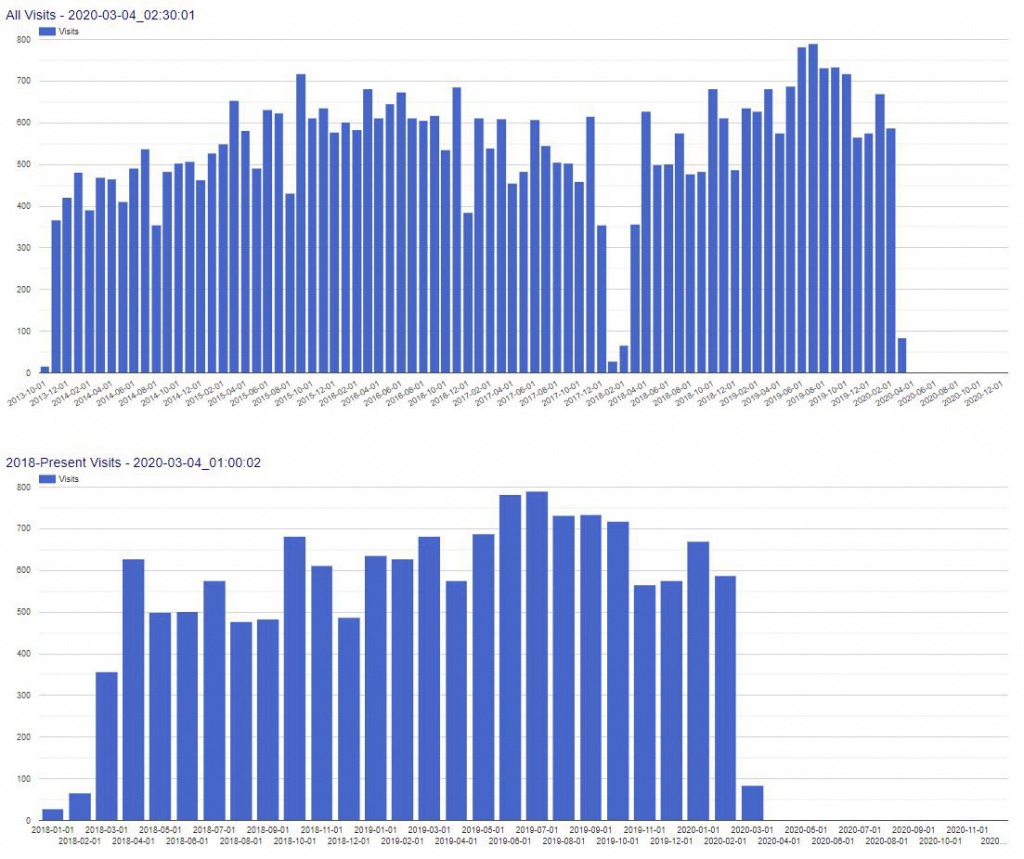
Individual OCT patient visits each month since 2013 (upper) and since 2018 (lower). This data and the individual scan data above is currently being used to build a case for new equipment.
Equipment Database
I have also developed a bespoke equipment database to keep track of the department’s capital and clinically important equipment. The database is based on MySQL server running on the same PC as the above Fields Server. It contains 130 entries and flags up those items that have reported defects, are overdue for service and are overdue for Portable Appliance Testing (PAT).
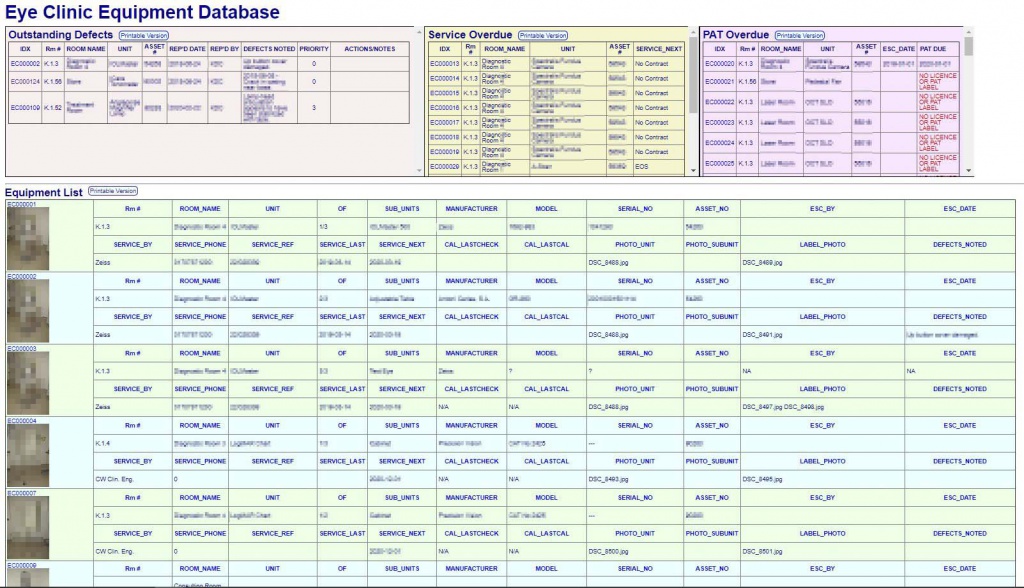
Eye Clinic Equipment database main review screen with the main entries (bottom panel) and three alert panels at the top for Outstanding Defects, Supplier Service and PAT Testing.
Zeiss Clarus Retinal Fundus Camera Web-Viewer
Zeiss’ native viewing client is remarkably difficult to install reliably, so I rapidly built and deployed a web-based system to get images from the Clarus camera to the doctors’ desks instantly using the default ‘export at end of session function’ behaviour. It has proven so reliable and easy to use that, despite lacking the editing and measuring functionality of the native client, most doctors prefer to use it.
UPDATE: The Zeiss Clarus exports images to a single network location (mapped drive), unlike the HFA which deposits reports into patient-specific folders. The number of images rapidly become burdensome for sorting and indexing. With the introduction of a Hagg-Streit digital slit-lamp that behaves in the same way as the Clarus I wrote a script that sorts incoming images from both machines into folders and rewrote the Clarus Viewer to serve both instruments.
